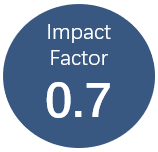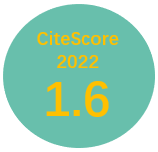Infrastructure equity issues of airports and universities across regional states in Ethiopia: A preliminary overview
Vol 6, Issue 1, 2022
VIEWS - 550 (Abstract) 320 (PDF)
Abstract
The purpose of this article is to determine the equitability of airport and university allocations throughout Ethiopian regional states based on the number of airports and institutions per 1 million people. According to the sample, the majority of respondents believed that university allocation in Ethiopia is equitable. In contrast, the majority of respondents who were asked about airports stated that there is an uneven distribution of airports across Ethiopia’s regional states. Hence, both interviewees and focus group discussants stated that there is a lack of equitable distribution of universities and airports across Ethiopia’s regional states. This paper contributes a lesson on how to create a comprehensive set of determining factors for equitable infrastructure allocation. It also provides a methodological improvement for assessing infrastructure equity and other broader implications across Ethiopian regional states.
Keywords
Full Text:
PDFReferences
Adams JS (1963). “Towards an understanding of inequity”. The Journal of Abnormal and Social Psychology, 67(5): 422–436. https://doi.org/10.1037/h0040968
Akanbi OA (2013). “Does governance matter in infrastructure: Evidence from Sub-Saharan Africa”. International Business & Economics Research Journal, 12(1): 113–126. https://doi.org/10.19030/iber.v12i1.7516
Alcott B, Rose P, Sabates R and Torres R (2018). “Measuring equity for national education planning”. In: Handbook on Measuring Equity in Education, pp. 80–107. UNESCO Institute for Statistics.
Alesina A and Perotti R (1996). “Fiscal discipline and the budget process”. The American Economic Review, 86(2): 401–407.
Anderson E and O’Neil T (2006). A New Equity Agenda? Reflections on the 2006 World Development Report, the 2005 Human Development Report and the 2005 Report on the World Social Situation (Working Paper 265). Overseas Development Institute.
Atkinson CL (2020). “The Federal Aviation Administration Airport Improvement Program: Who benefits?” Public Organization Review, 20(4): 789–805. https://doi.org/10.1007/s11115-020-00471-8
Bajar S and Rajeev M (2015). The Impact of Infrastructure Provisioning on Inequality: Evidence from India (Working Paper No. 35). Global Labour University.
Bishaw A and Melesse S (2017). “Historical analysis of the challenges and opportunities of higher education in Ethiopia”. Higher Education for the Future, 4(1): 31–43. https://doi.org/10.1177/2347631116681212
Buckner E (2013). “Access to higher education in Egypt: Examining trends by university sector”. Comparative Education Review, 57(3): 527–552. https://doi.org/10.1086/670665
Calderón C and Servén L (2004). The Effects of Infrastructure Development on Growth and Income Distribution (Policy Research Working Paper No. 3400). World Bank. https://doi.org/10.1596/1813-9450-3400
_____ (2010). “Infrastructure and economic development in Sub-Saharan Africa”. Journal of African Economies, 19(suppl_1): i13–i87. https://doi.org/10.1093/jae/ejp022
_____ (2014). Infrastructure, Growth, and Inequality: An Overview (Policy Research Working Paper No. 7034). World Bank.
Chakamera C and Alagidede P (2018). “The nexus between infrastructure (quantity and quality) and economic growth in Sub Saharan Africa”. International Review of Applied Economics, 32(5): 641–672. https://doi.org/10.1080/02692171.2017.1355356
Shelly D, Chatelin B, Haworth S, et al. (2016). Transport Policy Framework (White Paper). European Commission and African Union Commission.
Chotia V and Rao NVM (2015). “Examining the interlinkages between regional infrastructure disparities, economic growth, and poverty: A case of Indian states”. Economic Annals, 60(205): 53–71. https://doi.org/10.2298/EKA1505053C
Creswell J (1998). Qualitative Inquiry and Research Design: Choosing Among Five Traditions. Sage Publications.
Cupito E and Langsten R (2011). “Inclusiveness in higher education in Egypt”. Higher Education, 62(2): 183–197. https://doi.org/10.1007/s10734-010-9381-z
Deloitte & Touche (2014). Ethiopia: A Growth Miracle. Deloitte & Touche.
Egeland J and Smale P (2017). Capacity Building through Efficient Use of Existing Airport Infrastructure (Dis-cussion Paper No. 2017-27). Organisation for Economic Co-operation and Development.
Ferreira FH and Walton M (2005). World Development Report 2006: Equity and Development (Vol. 28). World Bank Publications.
Fincham JE (2008). “Response rates and responsiveness for surveys, standards, and the Journal”. American Journal of Pharmaceutical Education, 72(2): Art. 43. https://doi.org/10.5688/aj720243
Hair JF Jr., Hult GTM, Ringle C and Sarstedt M (2016). A Primer on Partial Least Squares Structural Equation Modeling (PLS-SEM). SAGE Publications.
Iruonagbe C, Imhonopi D and Egharevba ME (2015). “Higher education in Nigeria and the emergence of private universities”. International Journal of Education and Research, 3(2): 49–64.
Kothari C (2004). Research Methodology: Methods and Techniques (2nd Rev. Ed.). New Age International Pub-lishers.
Litman T (2021). Evaluating Transportation Equity: Guidance for Incorporating Distributional Impacts in Transport Planning. Victoria Transport Policy Institute.
Makmuri A (2017). “Infrastructure and inequality: An empirical evidence from Indonesia”. Economic Journal of Emerging Markets, 9(1): 29–39. https://doi.org/10.20885/ejem.vol9.iss1.art4
Malterud K, Siersma VD and Guassora AD (2016). “Sample size in qualitative interview studies: Guided by in-formation power”. Qualitative Health Research, 26(13): 1753–1760. https://doi.org/10.1177/1049732315617444
Patra AK and Acharya A (2011). “Regional disparity, infrastructure development and economic growth: An in-ter-state analysis”. Research and Practice in Social Sciences, 6(2): 17–30.
Peters S and Pintus PA (2018). Infrastructure Investments: A Broad-Based Policy Tool for Equitable and Sus-tainable Growth. Friedrich-Ebert-Stiftung.
Pouris A and Inglesi-Lotz R (2014). “The contribution of higher education institutions to the South African economy”. South African Journal of Science, 110(3/4): 1–5. https://doi.org/10.1590/sajs.2014/a0059
Saldivar MG (2012). A Primer on Survey Response Rate. Learning Systems Institute, Florida State University.
Salmi J (2019). “Higher education equity policies across the globe”. International Higher Education, 98: 4–5.
Sanchez-Robles B (1998). “Infrastructure investment and growth: Some empirical evidence”. Contemporary Economic Policy, 16(1), 98–108. https://doi.org/10.1111/j.1465-7287.1998.tb00504.x
Scott AJ (2009). “World Development Report 2009: Reshaping economic geography”. Journal of Economic Geography, 9(4): 583–586. https://doi.org/10.1093/jeg/lbp019
Seid Y, Taffesse AS and Ali SN (2016). Ethiopia—An Agrarian Economy in Transition (WIDER Working Paper 2015/154). United Nations University World Institute for Development Economics Research. https://doi.org/10.35188/UNU-WIDER/2015/043-0
Semela T (2011). “Breakneck expansion and quality assurance in Ethiopian higher education: Ideological rationales and economic impediments”. Higher Education Policy, 24(3), 399–425. https://doi.org/10.1057/hep.2011.11
Son HH (2013). Equity and well-being: Measurement and policy practice. Rutledge.
Tilak JB (2015). “How inclusive is higher education in India?” Social Change, 45(2): 185–223. https://doi.org/10.1177/0049085715574178
Vyas S and Kumaranayake L (2006). “Constructing socio-economic status indices: How to use principal compo-nents analysis”. Health Policy and Planning, 21(6): 459–468. https://doi.org/10.1093/heapol/czl029
Weber L (2021). International Civil Aviation Organization (ICAO). Kluwer Law International BV.
Woldegiyorgis AA (2015). “A glance at the Ethiopian higher education from the developmental state perspective”. Bahir Dar Journal of Education, 15(2).
Yılmaz D and Çetin I (2017). “The impact of infrastructure on growth in developing countries: Dynamic panel data analysis”. In: Das RC (Ed.), Handbook of Research on Economic, Financial, and Industrial Impacts on Infrastructure Development, pp. 40–68. IGI Global. https://doi.org/10.4018/978-1-5225-2361-1.ch003
Zhang X and Fan S (2002). Infrastructure, Openness, and Regional Inequality in India [Conference presentation]. Agricultural and Applied Economics Association (AAEA) Conferences, Long Beach, CA, United States.
Zhang W, Li B, Yi W and Su J (2018). “Research of the planning of clean energy vehicles for civil airports”. In: 3rd International Conference on Electromechanical Control Technology and Transportation—ICECTT, 82–86. https://doi.org/10.5220/0006965400820086
DOI: https://doi.org/10.24294/jipd.v6i1.1319
Refbacks
- There are currently no refbacks.
Copyright (c) 2022 Ambaw Desalegn

This work is licensed under a Creative Commons Attribution-NonCommercial 4.0 International License.

This site is licensed under a Creative Commons Attribution 4.0 International License.










